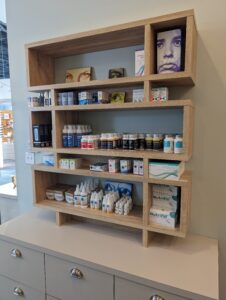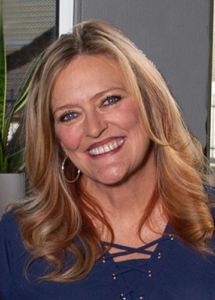
Supplements, eye drops and other products sold in Dr. Sorrenson’s office. She says you have to periodically review the return on investment you are making from selling ancillary products, and make adjustments as needed to ensure these products are a winner for both your patients and practice.
Easy way to check & boost profitability on the add-on products you sell.
By Laurie Sorrenson, OD, FAAO
Feb. 7, 2024
Have you recently assessed the profitability on the ancillary products you sell, such as eye drops, vitamins, masks, etc? If you’re like me, it may have been a while.
When I bring in a supplement, drop, etc., I always evaluate pricing structure and profitability at the time. However, unlike contact lenses, frames and spectacle lenses, which I review at least annually, I seldom revisit the pricing of these additional “miscellaneous” items.
So, I decided my quarterly “whole ass one thing” goal this quarter was to evaluate profitability of all our “miscellaneous” stuff and figure out ways to make it more profitable and use less staff time.
Spread-Sheeting Your ROI on Extras You Sell
We made a spreadsheet of all the drops, supplements, masks, cleaners, etc., that we sell. The spreadsheet includes columns for selling price, cost, the 15 percent commission for our associate doctors and a final column with a formula to calculate the profit margin.
That formula is: Sales – COGS – doctor % divided by the COGS.
Example 1: One bottle of supplement sells for $100. It costs us $40. The doctor gets $15.
100 – 40 – 15 = 45 divided by 40 is 112% profit margin.
Example 2: One eye drop bottle sells for $30. It costs us $19. The doctor get $4.50.
30 – 19 – 4.50 = $6.50 divided by 19 is 34% profit margin.
I had my financial consultant, who evaluates our practice monthly, figure out what a minimum profit margin should be for these products. He took into account overhead costs and some other fancy financial stuff that he tells me, but I don’t always understand, 😁 and told me that at a minimum we should have a 60 percent profit margin. That made it easy for me to decide to raise some prices, get rid of a few things we carry and work on creating an online store where COGS and staff time are not an issue.
Other Articles to Explore
Sell Yearly or Six-Month Supplies
Here is another tip to improve profitability…Sell supplements, drops, etc., as a “year supply” or “six-month supply” with a discount. Many optometrists do this with contact lenses, why not do it with the “miscellaneous” stuff we sell? One of our most profitable supplements is sold almost exclusively as a year supply.
Basically the patient pays for three bottles and gets the fourth one for free. I love this for two reasons. One, it is one transaction with the profitability of three transactions. Two, if patients have the year supply on hand they are MUCH more likely to take the supplement like they should. Good for the business, good for the patient! What’s not to love?
When will you evaluate your “miscellaneous” profitability?
How about packaging your miscellaneous as year supplies?
 Laurie Sorrenson, OD, FAAO, is president of Lakeline Vision Source in Cedar Park, Texas, and the Professional Editor of Review of Optometric Business (ROB). To contact her: lsorrenson@gmail.com.
Laurie Sorrenson, OD, FAAO, is president of Lakeline Vision Source in Cedar Park, Texas, and the Professional Editor of Review of Optometric Business (ROB). To contact her: lsorrenson@gmail.com.



























